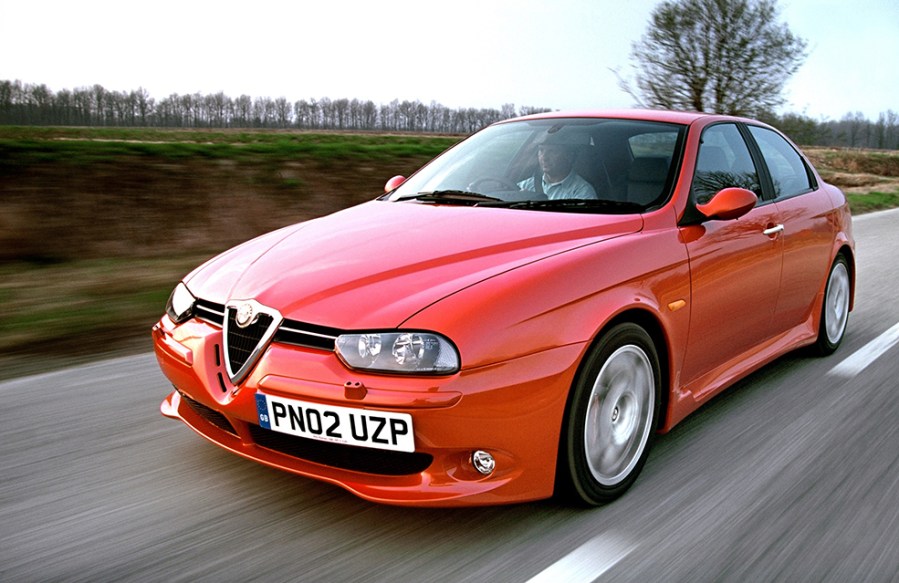The stylish Alfa Romeo 156 is a fantastic driver’s car with loads of Italian flair but is fast disappearing. Buy one while you still can
Words: Paul Wager
The ‘last chance saloon’ pun is slavishly trotted out every time Alfa Romeo launches a new model, but with the 156 launched in 1997 the marque really didn’t need to make any excuses. Indeed, it remains one of the marque’s biggest sellers in the UK.
Boasting elegant style courtesy of Walter da Silva and Alfa’s in-house Centro Stile, the front-wheel drive Alfa Romeo 156 backed it up with a conventional mechanical layout (no transaxles here) and a range of market-friendly petrol and diesel engines. Ranging from a 1.6-litre four to the 2.5-litre Busso V6, in finest Alfa tradition they were all pretty quick: even the entry-level 1.6 Twin Spark produced 118 bhp, while the 2.5-litre V6 knocked out a handy 189 bhp with a set of polished induction pipes and a glorious soundtrack.
Even better was the GTA model unveiled in September 2001, which used a 3.2-litre version of the V6 good for a limited 155 mph top end. Despite being front-wheel drive, the GTA managed to get its 247 bhp to the ground in a pretty effective manner and was a cracking package. There were some handy diesels too, notably the 113bhp 1.9-litre 16-valve unit and the 172bhp 2.4-litre five-cylinder which represented some clever marketing thinking as they sat neatly between the diesel choices offered by German rivals. The V6 was a development of the venerable unit which had served Alfa well since the ’70s but the other engines were all Fiat-developed units.
Perhaps most surprisingly of all, build quality was pretty good and the 156 was easy to live with even if the dealers didn’t quite measure up to the German brand experience.
A Sportwagon estate was launched in 2000 and the Alfa Romeo 156 would become the similar-looking but actually very different 159 in 2005. Although it was a very credible car, it did have a strand of genuine Alfa craziness running through it in that after the Fiat/GM collaboration fell apart, the platform was only ever used by this one model instead of the many Alfas, Buicks, Cadillacs and Saabs it was intended for.
Like many makers, Alfa Romeo is notorious for not supporting its older cars and specialists tell us that although mechanical and service parts are easily sourced, body and trim represents an ever-increasing problem. Essentially, you’ll be fine unless you crash it…
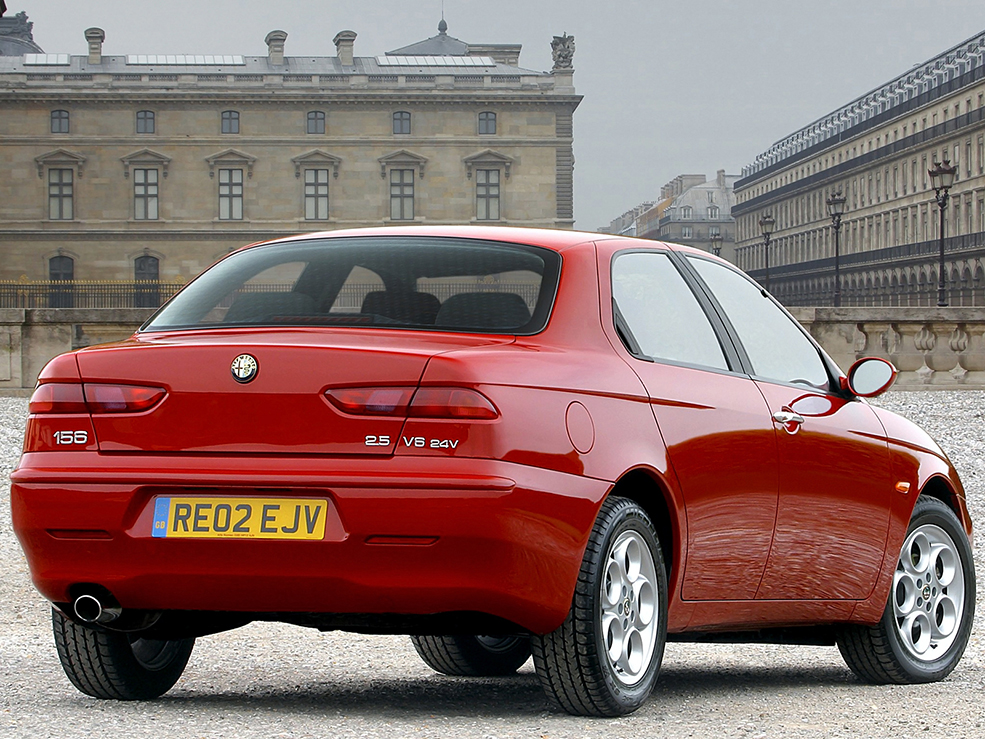
Bodywork
By brand standards, the Alfa Romeo 156 is a solid beast and even used galvanised panels but it’s important to remember that they’re getting on a bit now and with even the youngest now 20 years old, many are starting to feel the effects of the British climate. Although in the interests of balance, next time you spot a late ’90s BMW 3-Series, the crusty front arches will reinforce the point that even the German cars don’t survive winter road salt much better.
Specific points to watch on the 156 are the floors and sills, with some specialists seeing examples so bad they reckon you could stamp the footwell floor out with your foot. The cause is reckoned to be the original factory underbody protection cracking with age and letting water in, but not all cars will be affected. Check both inside and outside, getting a hand under the carpets if possible, especially in the rear footwells. The inner floors are coated in a bitumen-style material which can conceal serious rot.
It’s also worth peering behind the plastic arch liners to check for corrosion in the strut tops and the inner wings, especially at the lower edge.
At longtime Alfa specialist EB Spares they point out that Alfa Romeo no longer supplies panels for the 156 and even items like lights are becoming tricky to source.
Some pattern sills and bumpers are available, while repair sections are available for the wings and arches. And in a worst-case scenario, a skilled fabricator can always rescue things… at a cost.
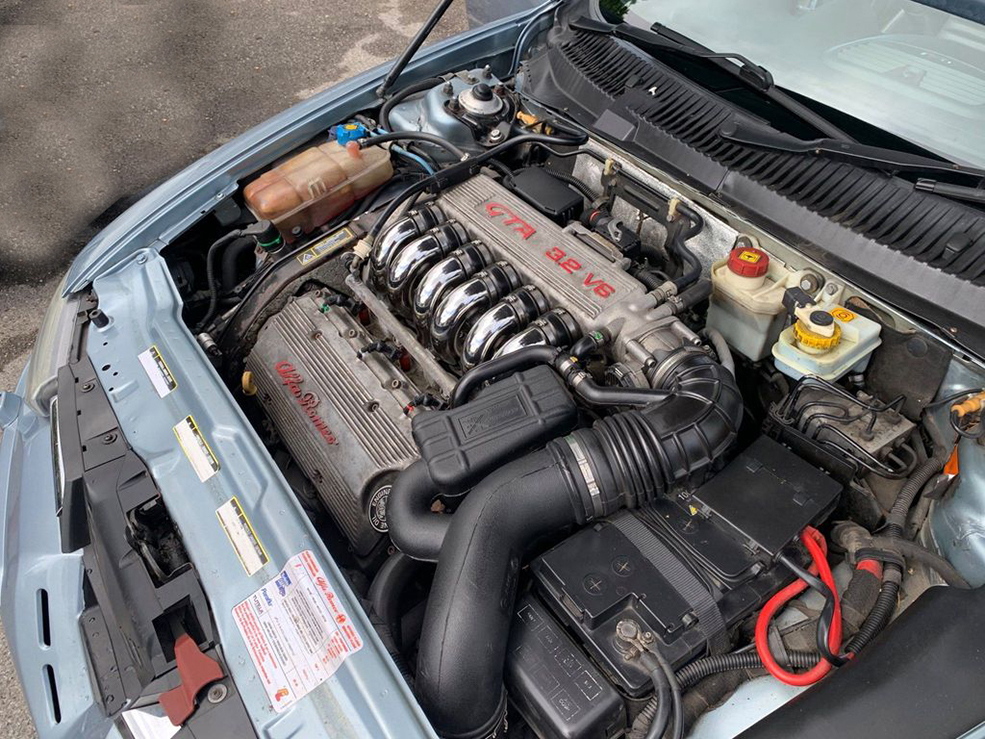
Engine and transmission
There’s better news here for the Alfa Romeo 156, as EB Spares point out that the mechanical parts are still well covered for parts and service items, helped of course by the fact that most of the engines were used across the Fiat range too.
Major engine issues should be obvious, but even if all seems perfect, check that the cam belt has been changed in living memory. Alfa originally prescribed a 72,000-mile change interval but from 2006 brought that down to 36,000 miles.
At cam belt change time, it’s also recommended to change the camshaft variator on the four-cylinder engines which can cause an annoying rattle. On the V6 engines, it’s sensible to change the water pump too.
A flat spot on acceleration can be caused by a failing air flow meter but it won’t always bring up the engine warning light. Sample a selection of cars to get a feel for how they drive but they are under £150 and an easy DIY fit.
In the finest Alfa tradition the engines all use a bit of oil when driven hard, so check the dipstick for an idea of how well it’s been maintained.
If the clutch bites right at the top of the pedal travel, be aware that it’s a self-adjusting mechanism so you’ve effectively run out of adjustment and a replacement clutch is on the horizon.
The automated manual Selespeed is an acquired taste and doesn’t have the best reputation for reliability, so is perhaps best left to the diehard Alfisti. Relays and accumulators are available but the actuator mechanism is no longer available new.
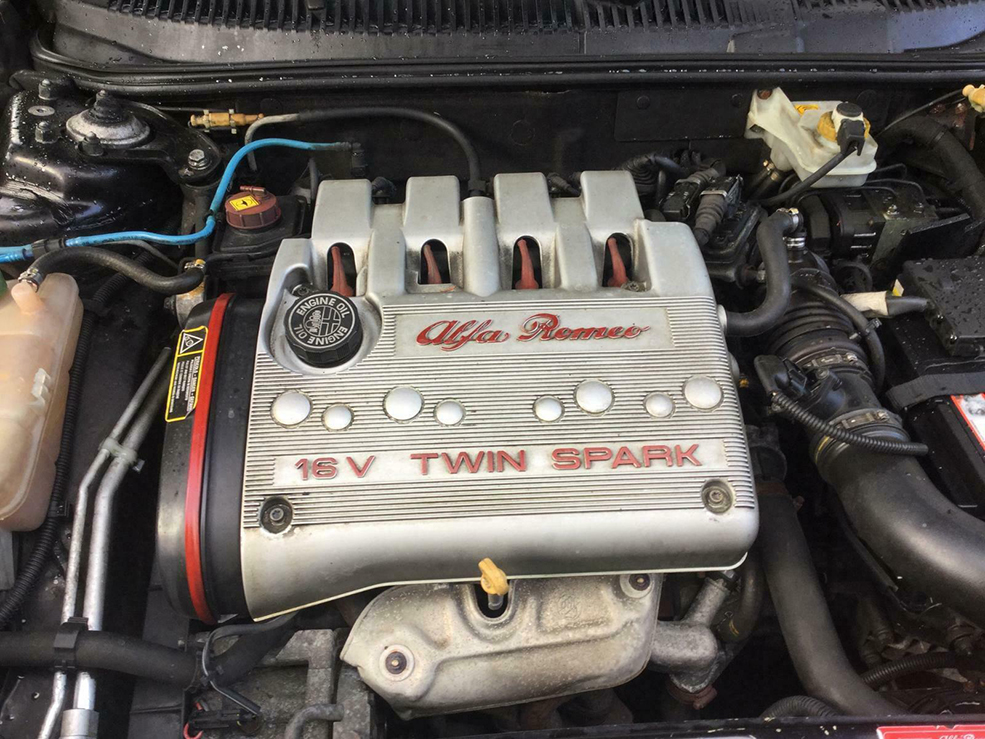
Suspension, steering and brakes
The Alfa Romeo 156 is known for being hard on its suspension, not helped by the way it encourages you to drive. It’s the bushes which tend to give up, but luckily parts supply remains good. As they point out at EB Spares, there are four suppliers for the wishbones for example, so this is one of the few areas of the 156 which needn’t be a problem.
The main wear points are the wishbone bushes at the front and the bushes in the rear control arm. Replacement arms complete with bushes are available from stock and are a DIY job.
The brakes are a conventional system and problems will be the usual issues like sticking calipers, which are easily rectified with a reconditioned unit at under £150. Except, that is for the GTA which commands over £2000 for a set of reconditioned calipers.
Power steering leaks can be a bigger headache than you might expect since many of the hoses are no longer available. It’s not a disaster since a hydraulic specialist or agricultural engineer can make up a new hose with the correct fittings, but it can trip you up and mean the car is off the road for a while.

Interior, trim and electrics
Incredibly, the electrics on the Alfa Romeo 156 are generally regarded as being pretty reliable – or at least as reliable as any car of its age.
The instrument cluster display can start to lose pixels and you might get an erroneous seatbelt or airbag warning light if a wire under the seat is dislodged, but in general the systems stand up well.
Similarly, the cabin fittings are reasonably robust, with only a drooping fusebox lid spoiling the party, which can be fixed with a well placed self-tapper. The Momo leather option is well worth having as it looks tremendous and if it’s looking tired, you can work wonders with a clean and colour kit.
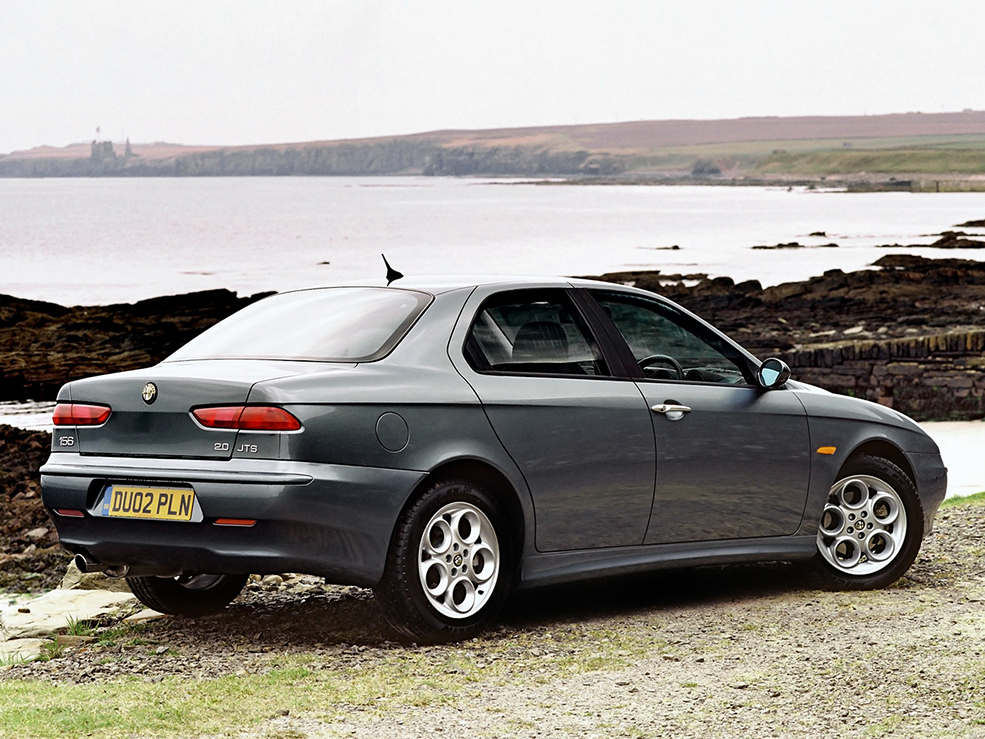
Alfa Romeo 156: our verdict
It’s a crying shame that the 156 has faded away almost to the point of extinction, as it genuinely was a car for which Alfa needed to make no excuses and a real breath of fresh air compared to the German opposition in the fleet market of the time.
Sadly, parts support means the days of using these cars as everyday fodder have probably passed, certainly for all-year round use. The choice of cars is also getting ever more limited, with the late-model diesels seemingly being the most numerous survivors, accompanied by a handful of pricey GTAs.
Our choice would be either the 2-litre Twin Spark or preferably a pre-facelift V6 in the Achille Blue which is so much less obvious than Rosso Alfa. Oh and with the brown Momo leather but without that ludicrous optional hoop spoiler.
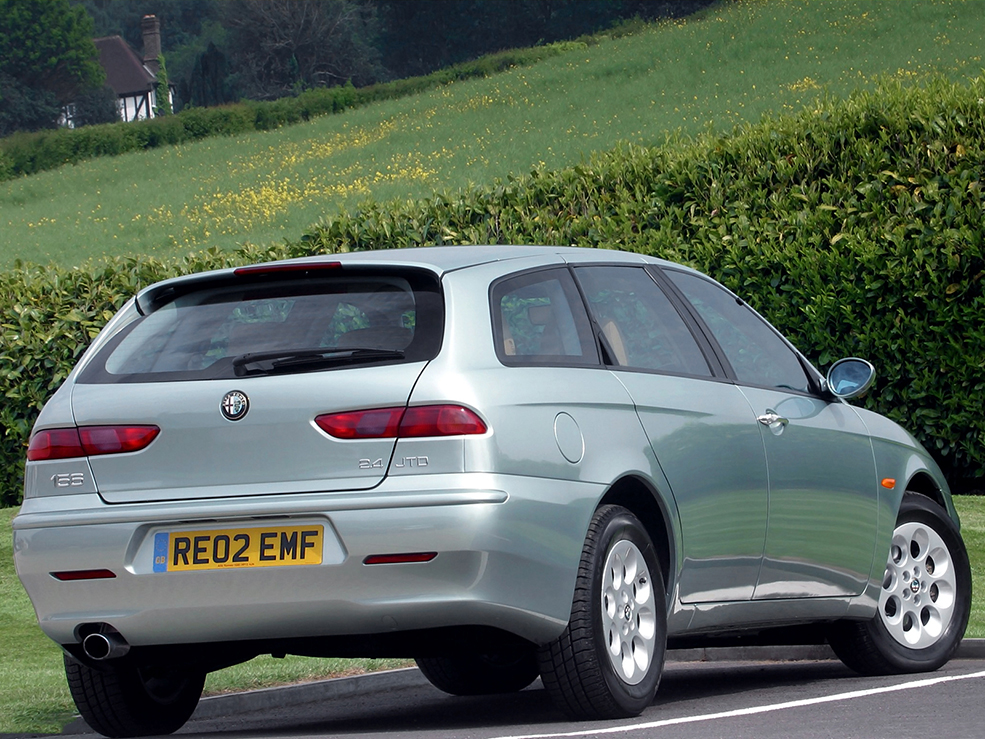
Alfa Romeo 156 timeline
1997
Alfa 156 launched in Europe at the Frankfurt show
1998
UK launch of the 156, offered as 1.8 or 2.0 Twin Spark and 2.5 V6
1999
The five-cylinder 2.4 JTD joins the range
2000
The 1.6 Twin Spark joins the range. 2.0 Twin Spark replaced by the direct injection 2.0 JTS, GTA 3.2 launched
2003
Facelift brings front end restyle. 1.9TD is added to the range.
2005
156 is replaced by the 159

